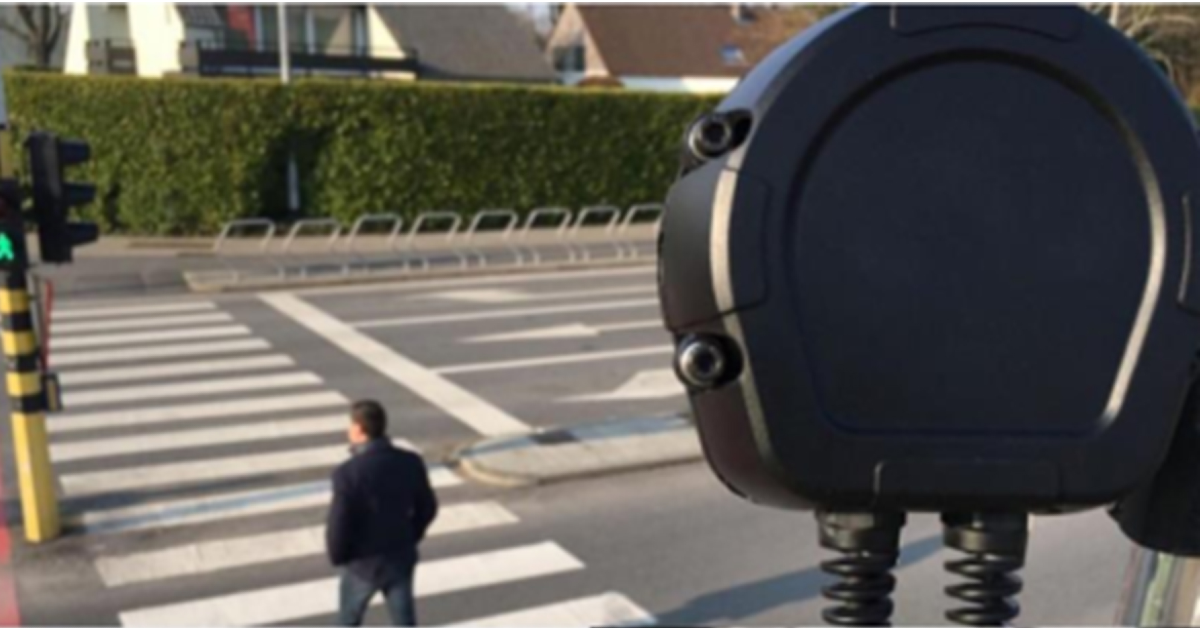FLIR TrafiOne Traffic Sensor Protects Vulnerble People From Crosswalk Accidents

TrafiOne ensures the safety of pedestrians, including children and the elderly, and protects drivers from poor visibility at night or in bad weather.
Smart crosswalks—featuring a combination of traffic lights, traffic sensors, road markers, and electronic signboards—are the next step in alerting drivers to the presence of vulnerable pedestrians. These systems can include traffic sensors such as FLIR TrafiOne, which work like sentinels engineered to prevent traffic accidents on and around pedestrian crossings. Solar-powered road markers and LED displays offering text updates work in concert with TrafiOne and other conventional traffic safety systems to notify drivers of the presence of pedestrians in a crosswalk. This type of “hybrid” system has been installed as part of pilot projects led by local governments to protect children in school zones as well as residential areas across Seoul in an attempt to further strengthen the safety of pedestrians.

FLIR TrafiOne Traffic Sensor
According to statistics released by KoROAD, an organization dedicated to road traffic safety in November 2022, 6,575 people were killed in pedestrian traffic accidents from 2017 to 2021. Among these victims, 32.5% (2,144 persons) were involved in accidents outside of crosswalks”, meaning more pedestrians were, in fact, killed while crossing the road legally using crosswalks.
More intelligent “smart crosswalks”
To make crosswalks safer for children, seniors, and other “mobility disadvantaged” persons, several municipal governments with smart city policies have started testing smart crosswalks. By combining conventional traffic lights and stop lines with road markers and electronic signboards, these smart crosswalks can alert approaching vehicles to the presence of pedestrians much more effectively. For example, when a pedestrian steps foot onto a crosswalk, the FLIR TrafiOne traffic sensor detects their presence and activates white road markers embedded at regular intervals along the edge of the crosswalk while the LED signboard starts displaying, “Caution! Pedestrian.”

The FLIR TrafiOne traffic sensor can control road markers and LED signboard to display text updates in conjunction with conventional road safety systems.
Hwang Byeong-cheol, CEO of WYD Technology, says his company has partnered with Teledyne FLIR since 2014, when they installed FLIR traffic sensors FLIR for a pilot smart crosswalk system at an elementary school in Eunpyeong-gu, Seoul. Based on the success of that program, Hwang says they took part in pilot and commercial projects commissioned by multiple different local governments, eventually incorporating the FLIR TrafiOne sensor.
To date, WYD Technology has installed smart crosswalk systems powered by TrafiOne in several different locations, including Wollang Elementary School in Jeju-si, Hagye-ro in Sejong-si (Chungcheongnam-do) as well as various places in Goyangsi (Gyeonggi-do), Pyeongchang-si (Gangwon-do), and Heukseok-dong in Dongjakgu (Seoul). Proven highly effective in traffic accidents involving pedestrians, WYD Technology’s smart crosswalk system has built up an outstanding reputation among municipal governments and with the Korea Institute of Civil Engineering and Building Technology.
Accurate detection even at night and in heavy rain or snow
Building a smart crosswalk system with various sensors is not a linear process: there are several different ways to do it. Aside from FLIR TrafiOne, traffic safety vendors can use radars, lasers, and CCTVs, each of which offer a distinct set of advantages and disadvantages. What makes TrafiOne special is that its precision in detecting pedestrians is far superior to other technologies, thanks to a dual-camera system featuring thermal imaging and visual cameras. It’s also quite easy to install.
Hwang explains, “Radar or LiDAR that detects targets using radio waves or light can malfunction because of refraction or diffraction caused by snow or rain droplets during heavy precipitation. Meanwhile, CCTVs have a hard time recognizing pedestrians if lighting conditions are poor or at night.

The FLIR TrafiOne traffic sensor notifies drivers of pedestrians on crosswalks at night by turning on LED road markers embedded in the road when pedestrians cross the road
“In contrast, FLIR technology detects objects using both visible and thermal images, meaning it can sustain its outstanding detection capabilities in any weather condition or at night. And despite all that, TrafiOne is much easier to install compared to other alternatives available on the market,” Hwang says.
With such accurate detection, TrafiOne not only helps guarantees the safety of pedestrians using a crosswalk, but also gives drivers some much-needed peace of mind in an environment where it could be difficult to identify pedestrians on the crosswalk, such as at night or in bad weather.
Hwang adds, “Overseas, I heard people call TrafiOne the ‘button killer.’ If you look at crosswalks in other countries, you may have seen these buttons that people have to press when they come up to a crosswalk. The lights won’t turn green unless they physically press the button. But if you have the TrafiOne system installed, it detects the presence of pedestrians automatically and turns the lights on, eliminating the need to press the button altogether. It is such a useful feature for disabled persons.”
For more information on the FLIR TrafiOne traffic sensor, please visit our website (www.teledyneflir.com/products/trafione/).


